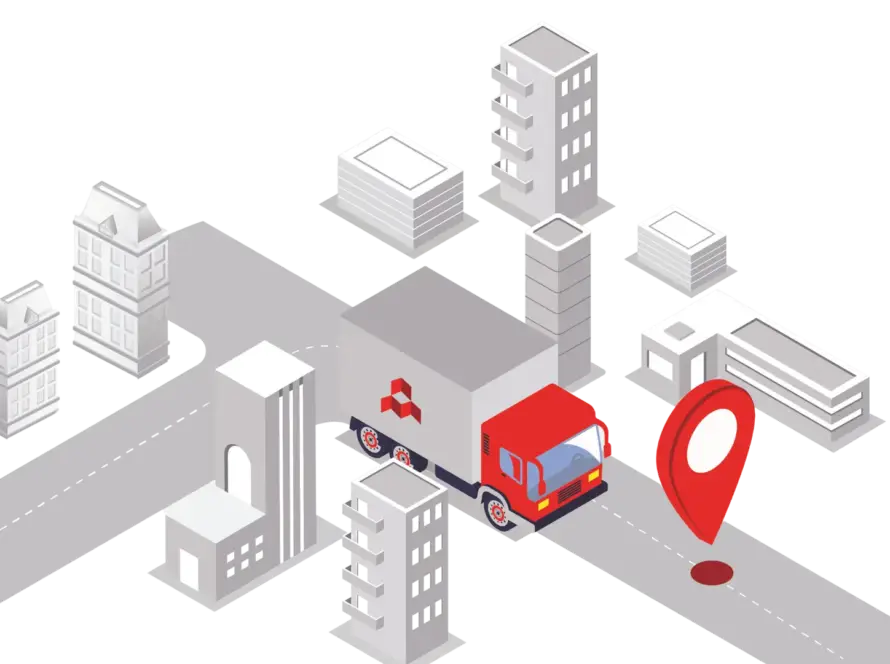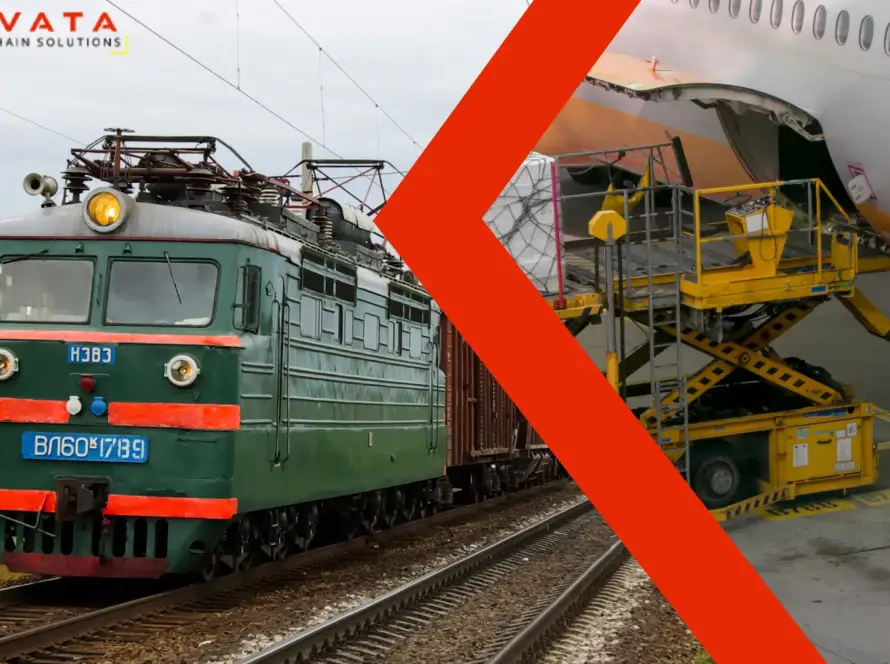Drone Delivery in India
With India’s booming e-commerce, expanding healthcare needs, and complex geography, the search for faster, cost-effective delivery methods has never been more urgent. One technology that’s catching everyone’s attention? Drone delivery in India.
From zipping over traffic jams in cities to reaching remote rural villages, drone delivery services are slowly becoming a game-changer. While still emerging, this innovation is already showing the potential to reshape logistics across the country. Let’s explore the opportunities, challenges, and innovations shaping the future of drone logistics in India.
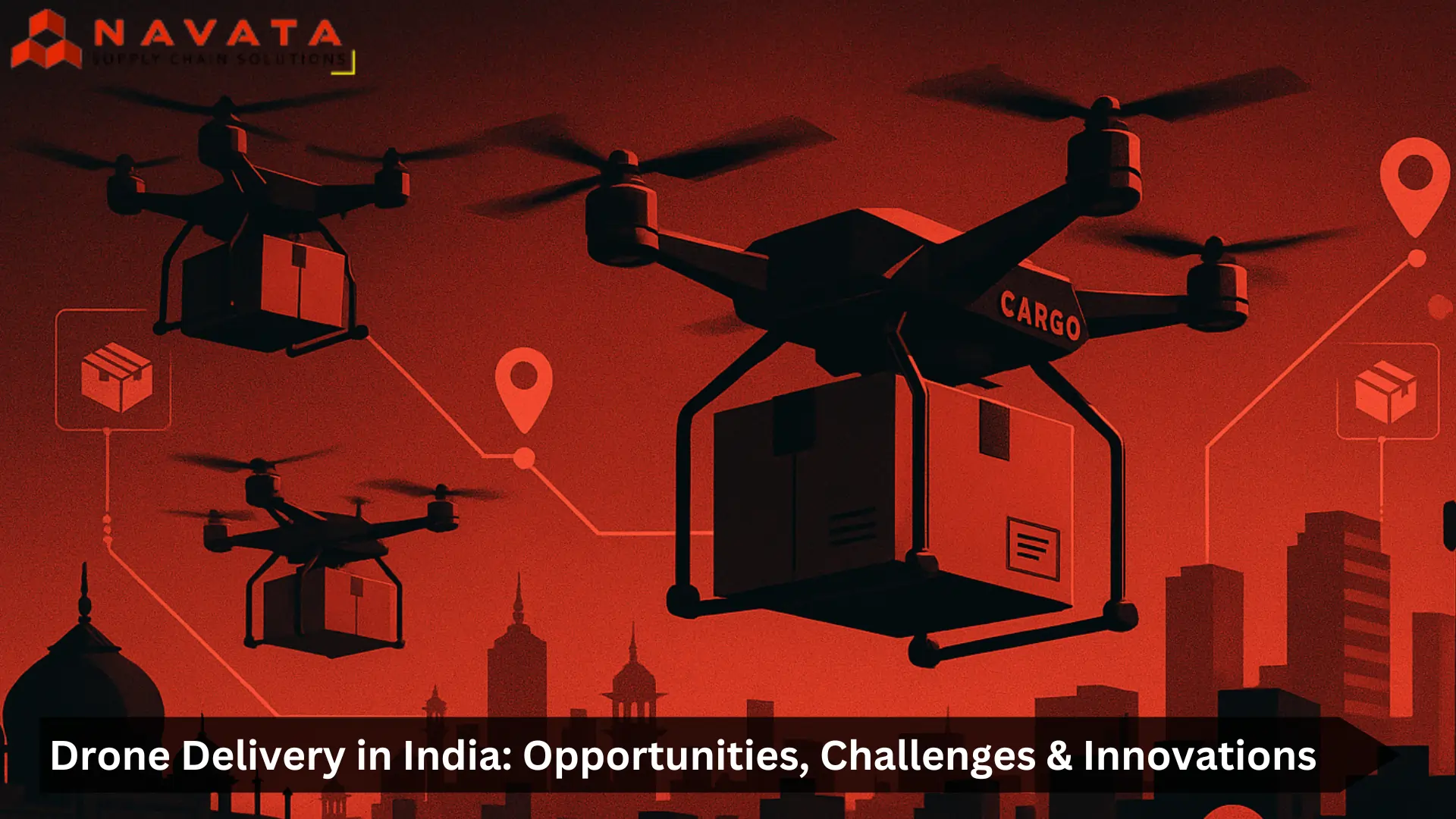
Why India Needs Drone Delivery Services
India handles millions of deliveries daily, and last-mile logistics often face roadblocks—literally. Traffic congestion, poor road conditions, and remote locations delay deliveries and increase costs. According to the World Economic Forum, last-mile delivery accounts for over 50% of total shipping costs.
Last-mile delivery drones offer a fresh solution.
• 🚁 They can bypass road traffic and fly directly to the delivery location.
• 🌄 They navigate tough terrain where roads don’t even exist.
• 🕒 They reduce delivery times, especially for urgent items like medical supplies.
That’s why logistics companies, startups, and even government agencies are looking up—literally—to the sky, embracing drone technology in logistics.
Key Opportunities in Drone Delivery
- E-commerce & Retail Delivery
India’s e-commerce market is expected to reach $200 billion by 2026. As customers demand faster deliveries, drones could help retailers meet tight timelines—especially in cities like Delhi, Mumbai, and Bangalore where traffic is a daily struggle. - Healthcare & Emergency Aid
Drones have already been used to deliver vaccines and medicines to remote areas in India. During emergencies, every second counts. With drone delivery services, life-saving supplies can reach disaster-hit zones quickly, where road transport might be blocked. - Rural Connectivity
Many Indian villages are hard to reach by road. Drones can bridge the logistics gap by delivering essentials like agricultural supplies, mobile banking equipment, and educational materials to rural communities. - Green Logistics
As businesses aim to cut emissions, drone delivery presents a sustainable alternative to fuel-based vehicles. Battery-powered last-mile delivery drones have a smaller carbon footprint, making them an eco-friendly choice.
Latest Innovations in Drone Delivery Technology
The drone industry is evolving fast. Let’s look at some of the exciting advancements:
• Increased Payloads: New drone models can carry up to 10–20 kg, ideal for larger packages or medical kits.
• AI Navigation: Drones are now using AI and machine learning for smart routing, weather adaptation, and real-time obstacle detection.
• Extended Flight Ranges: Battery and motor tech improvements are allowing drones to cover longer distances on a single charge.
• Autonomous Operations: Some drone delivery startups in India are testing fully autonomous drones that don’t need manual piloting, reducing human error.
Companies like Amazon (Prime Air), Dunzo, and Indian players such as Garud Aerospace and Redwing Labs are all pushing the boundaries of drone technology in logistics.
Challenges For Drone Delivery in India
Despite the momentum, there are still real challenges to address:
Regulatory Barriers
The Drone Rules 2021 simplified many processes, but operators still face delays in getting approvals. Key issues include:
• Lack of clarity on Beyond Visual Line of Sight (BVLOS) operations.
• Slow approval cycles from the Digital Sky platform.
• Inconsistent implementation across states.
Without a streamlined system, scaling operations remains difficult for drone delivery services.
Dependence on Imported Components
India still relies heavily on imports for critical parts like sensors, batteries, and flight controllers. This creates supply chain risks. While the PLI scheme is a step forward, more investment is needed in drone manufacturing in India.
Skilled Workforce Shortage
There’s a limited pool of trained drone pilots and engineers in India. This skill gap makes it hard for companies to scale. Programs like Drone Shakti and institutions like FlapOne Aviation are helping with drone pilot training, but wider outreach is necessary.
Public Perception and Privacy Concerns
While drones are exciting, many people are still wary of them. Concerns around privacy, noise, and misuse can affect public acceptance. Building trust through transparency and safety is key.
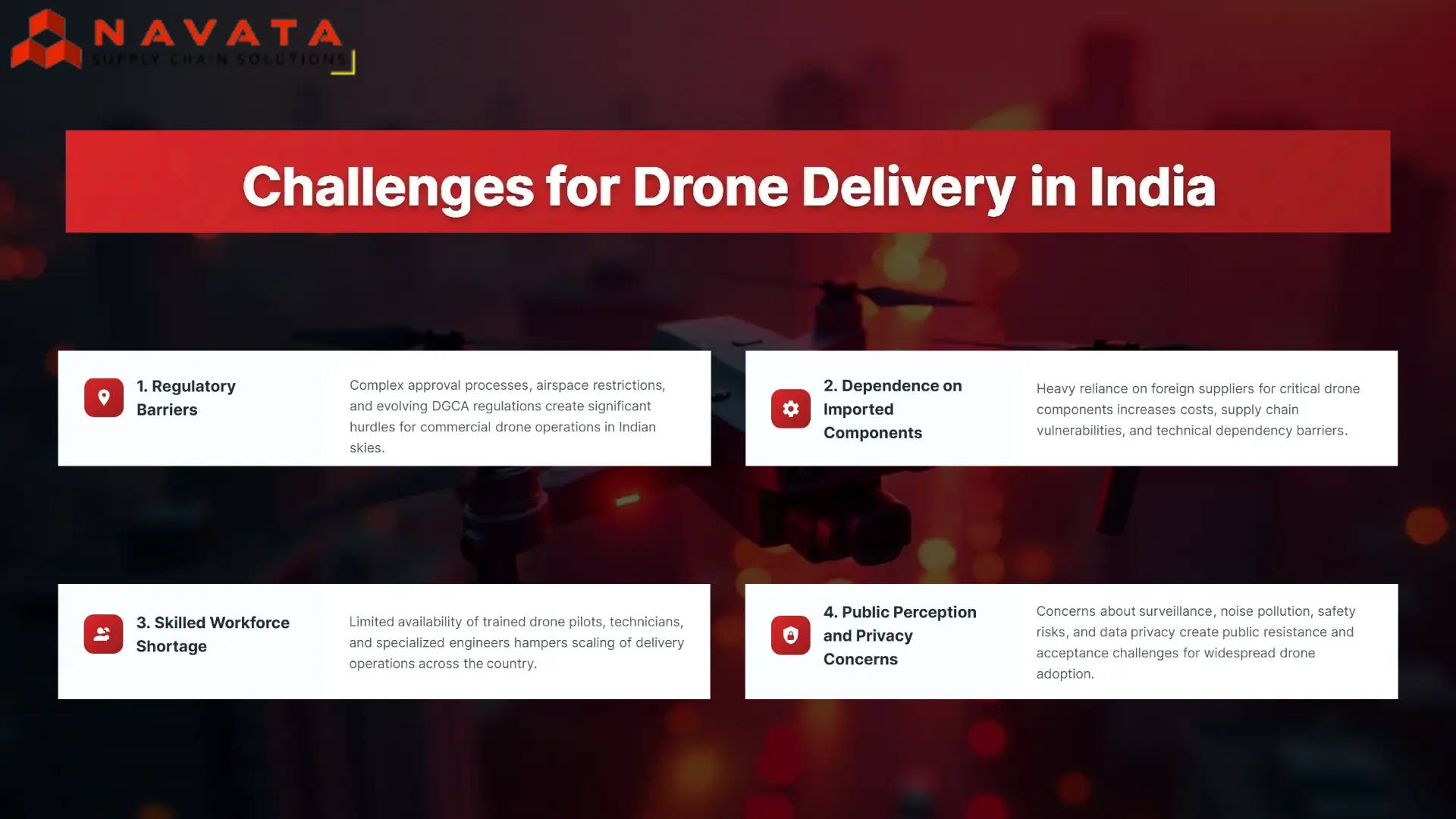
Government Support & Policy Developments
The Indian government is playing a vital role in supporting the ecosystem:
• PLI Scheme: ₹120 crore incentive for drone manufacturing in India.
• Drone Shakti Mission: Supports drone startups and pilot training programs.
• Digital Sky Platform: Centralized approval system for drone operators.
• Import Ban (2022): Boosts local manufacturing by restricting foreign drones.
With India aiming to become a global drone hub by 2030, the future of drone logistics in India looks promising.
Real-World Applications in Action
Several pilot programs are already demonstrating success:
• Telangana’s Medicine From the Sky: Delivered vaccines to rural PHCs.
• Garud Aerospace: Used drones for surveillance, mapping, and delivery.
• Skye Air: Partnered with hospitals for blood sample transport via drones.
These are great examples of drone delivery startups in India turning vision into action.
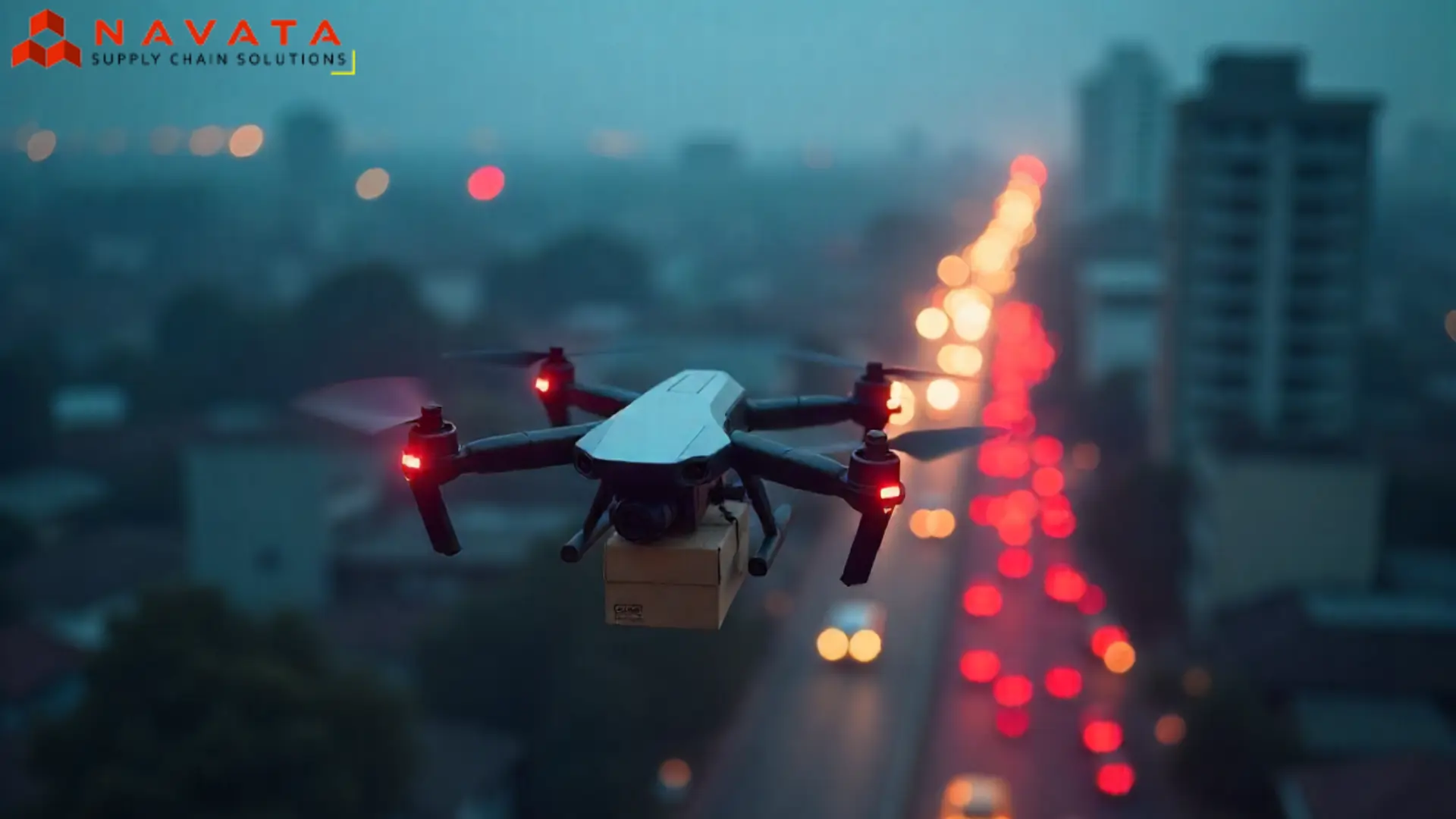
Conclusion
The potential for drone delivery in India is massive. From slashing delivery times to connecting remote communities, drones can make logistics faster, smarter, and greener. With policy support, innovation, and investment, the future of drone logistics in India is bright.
Whether you’re a business exploring drone delivery services or someone looking to pursue drone pilot training, the time to act is now.
The future is airborne—and India is ready to take off.
Thanks For Reading: Drone Delivery in India: Opportunities, Challenges & Innovations
Powered By 360Presence
